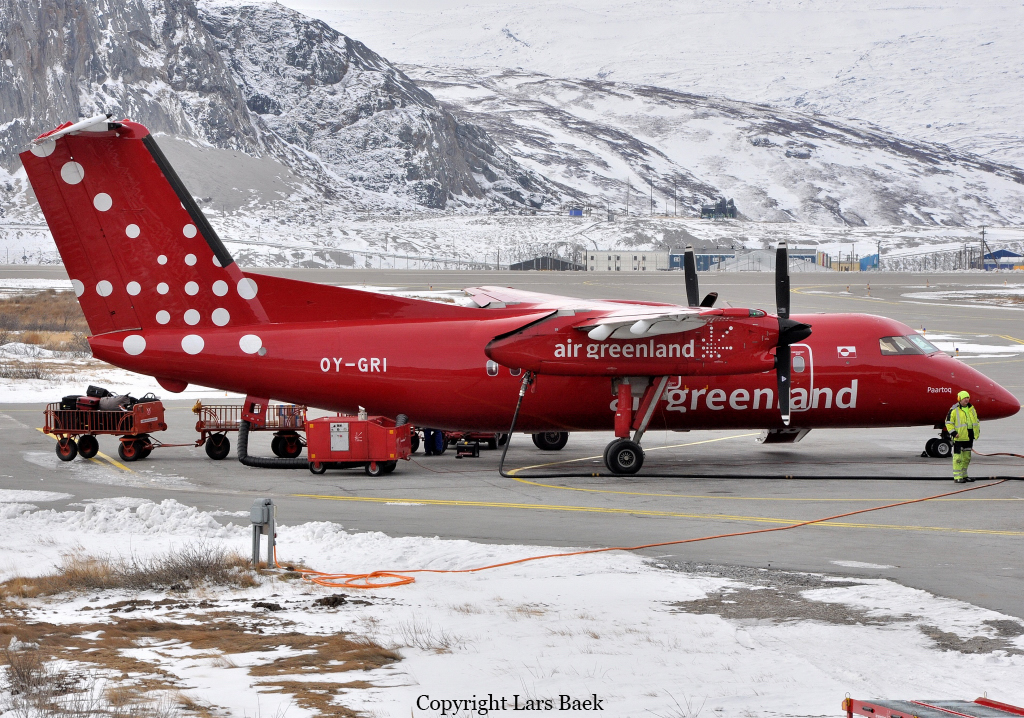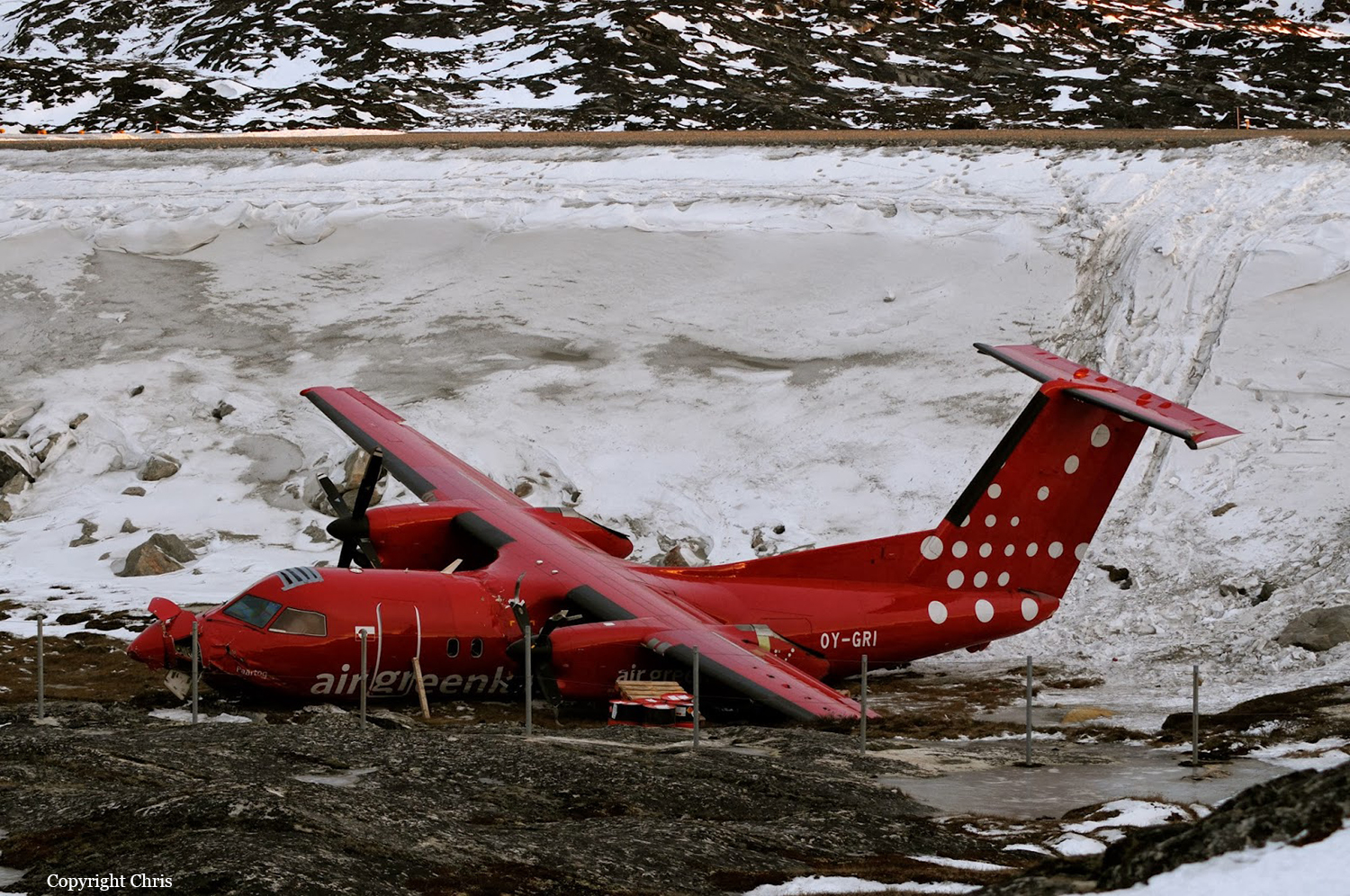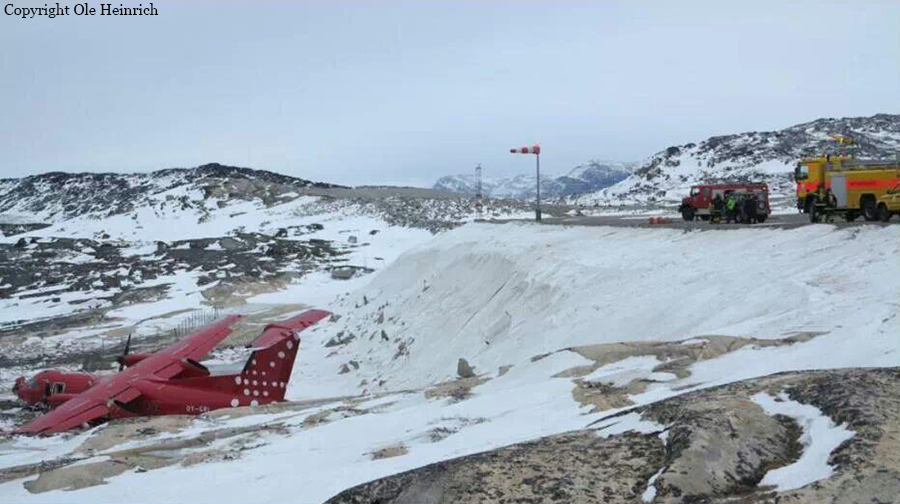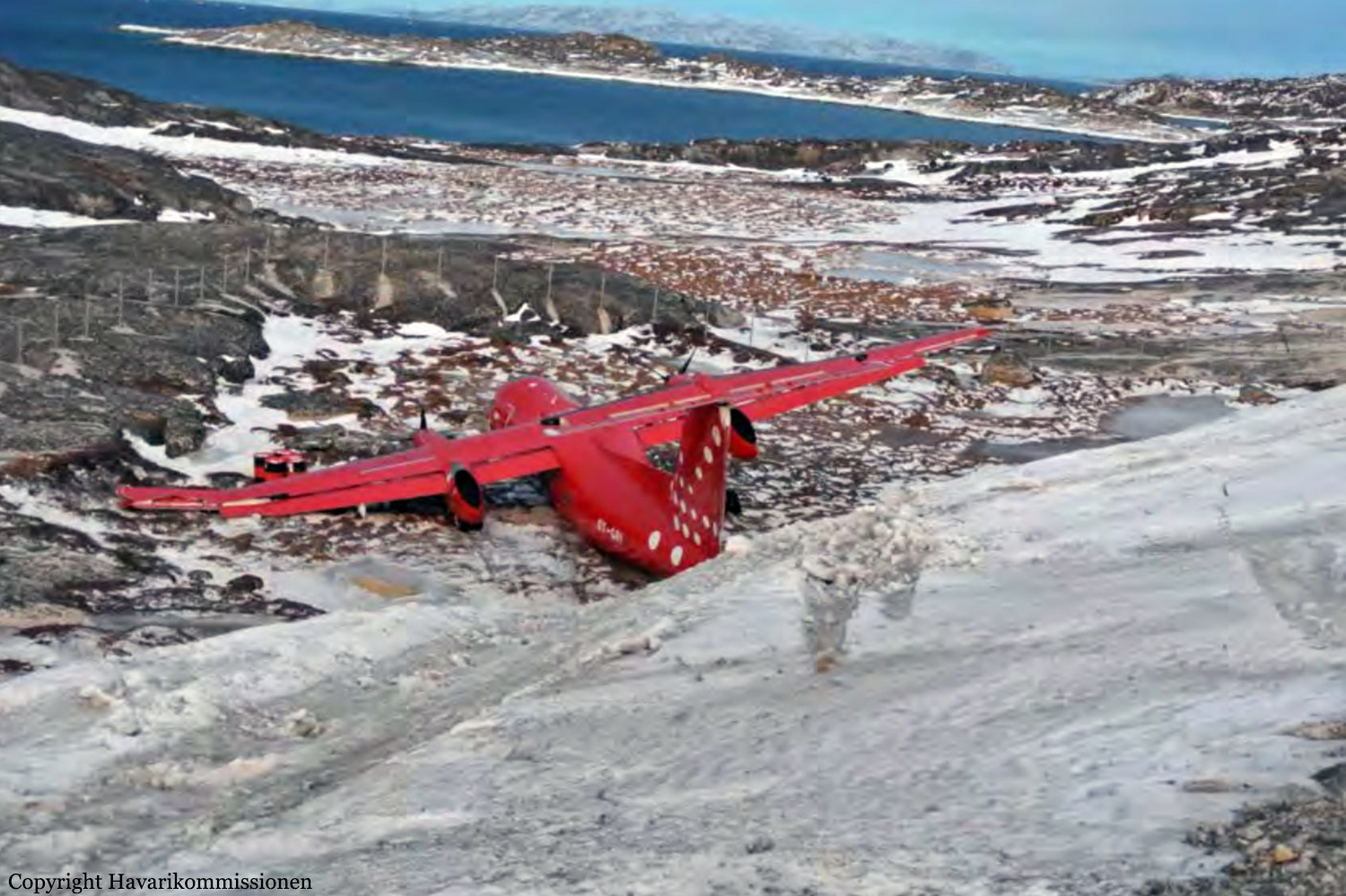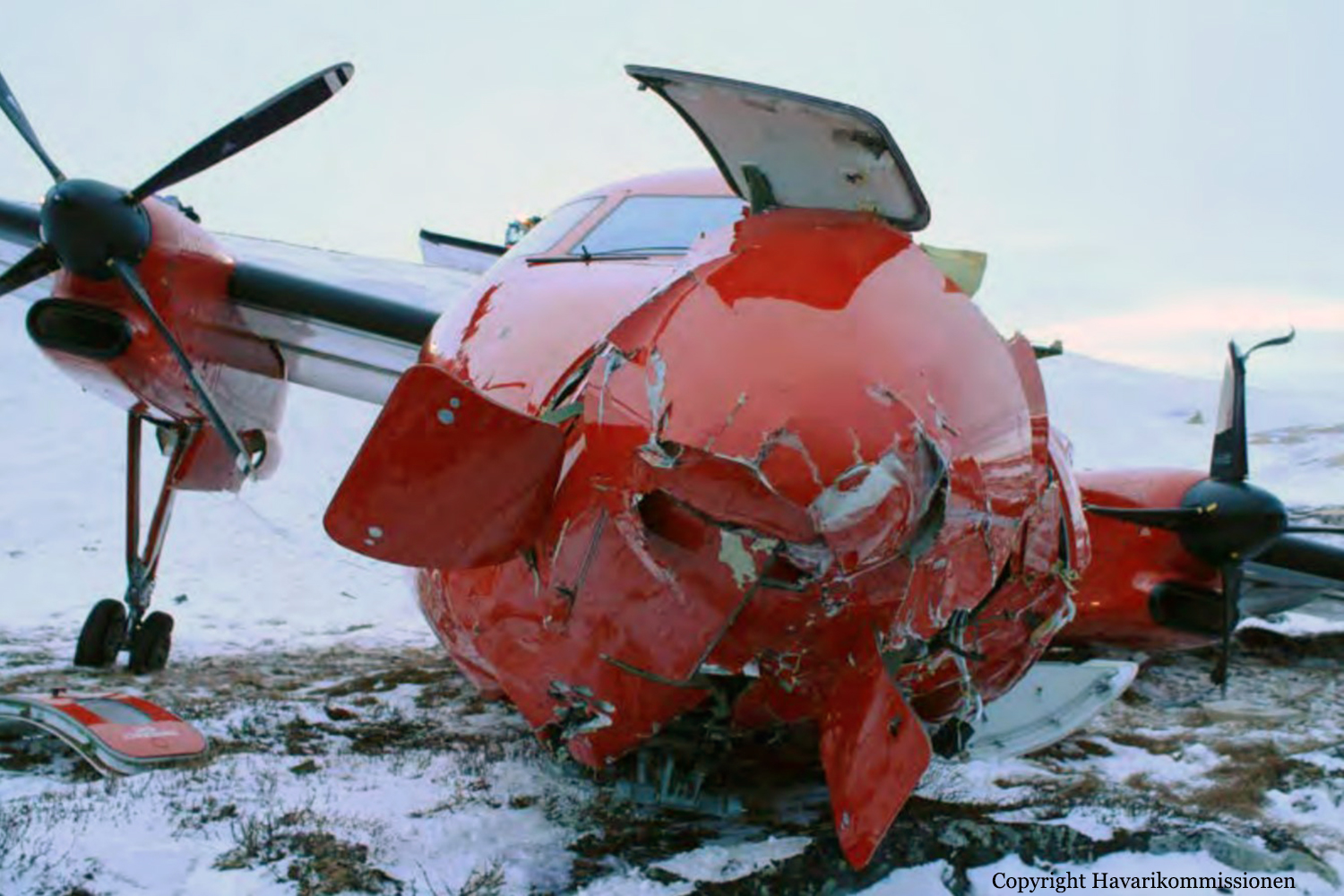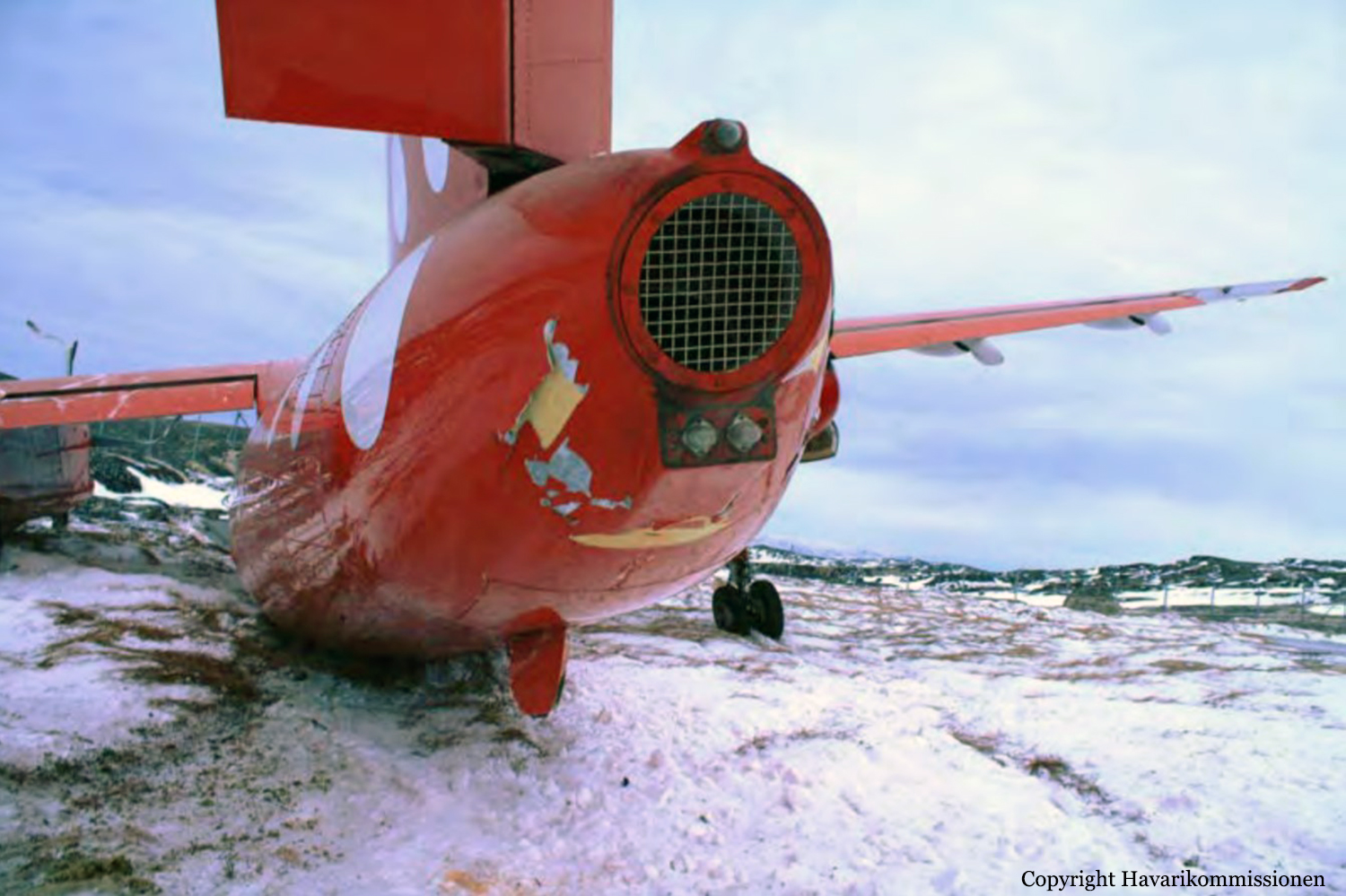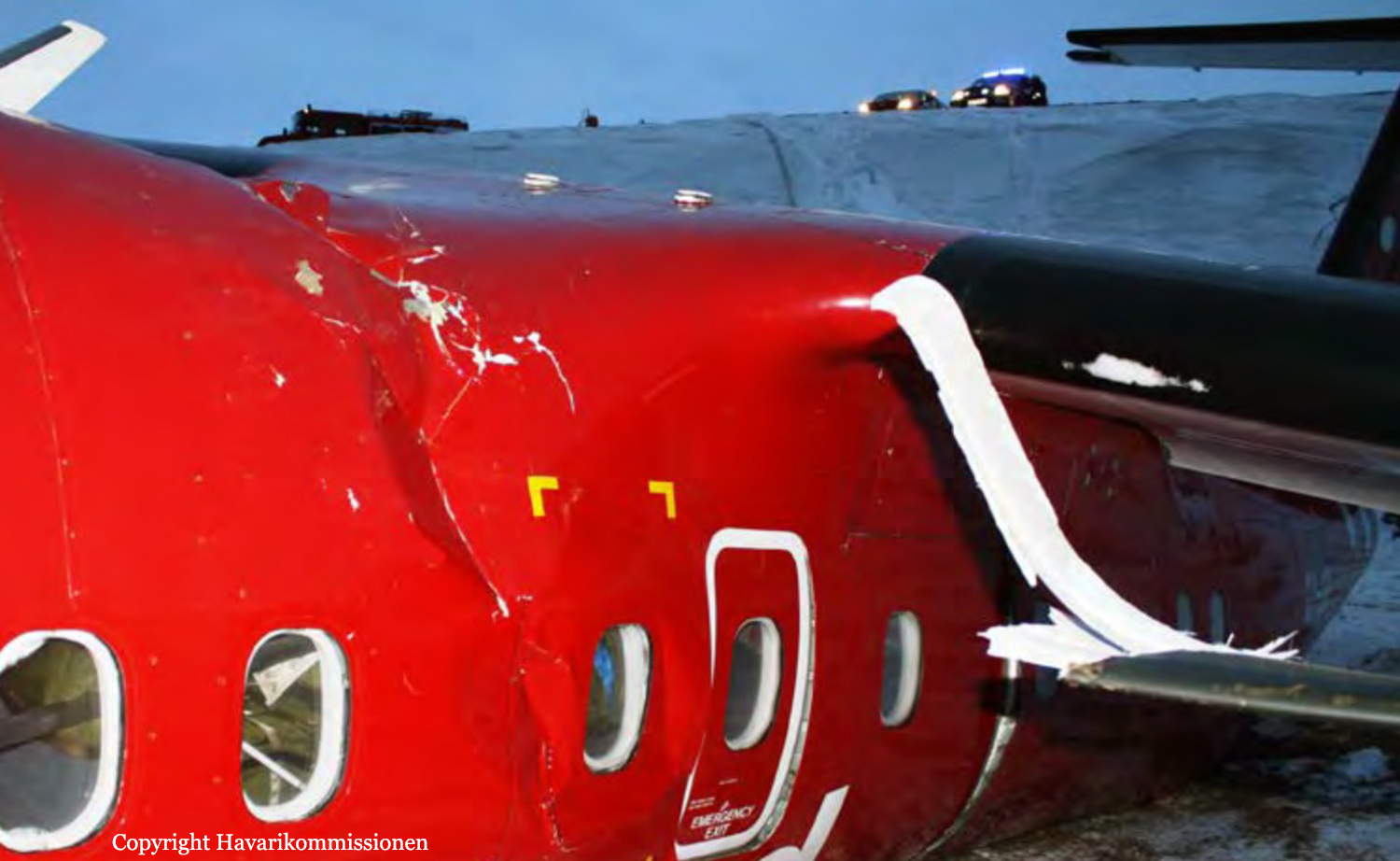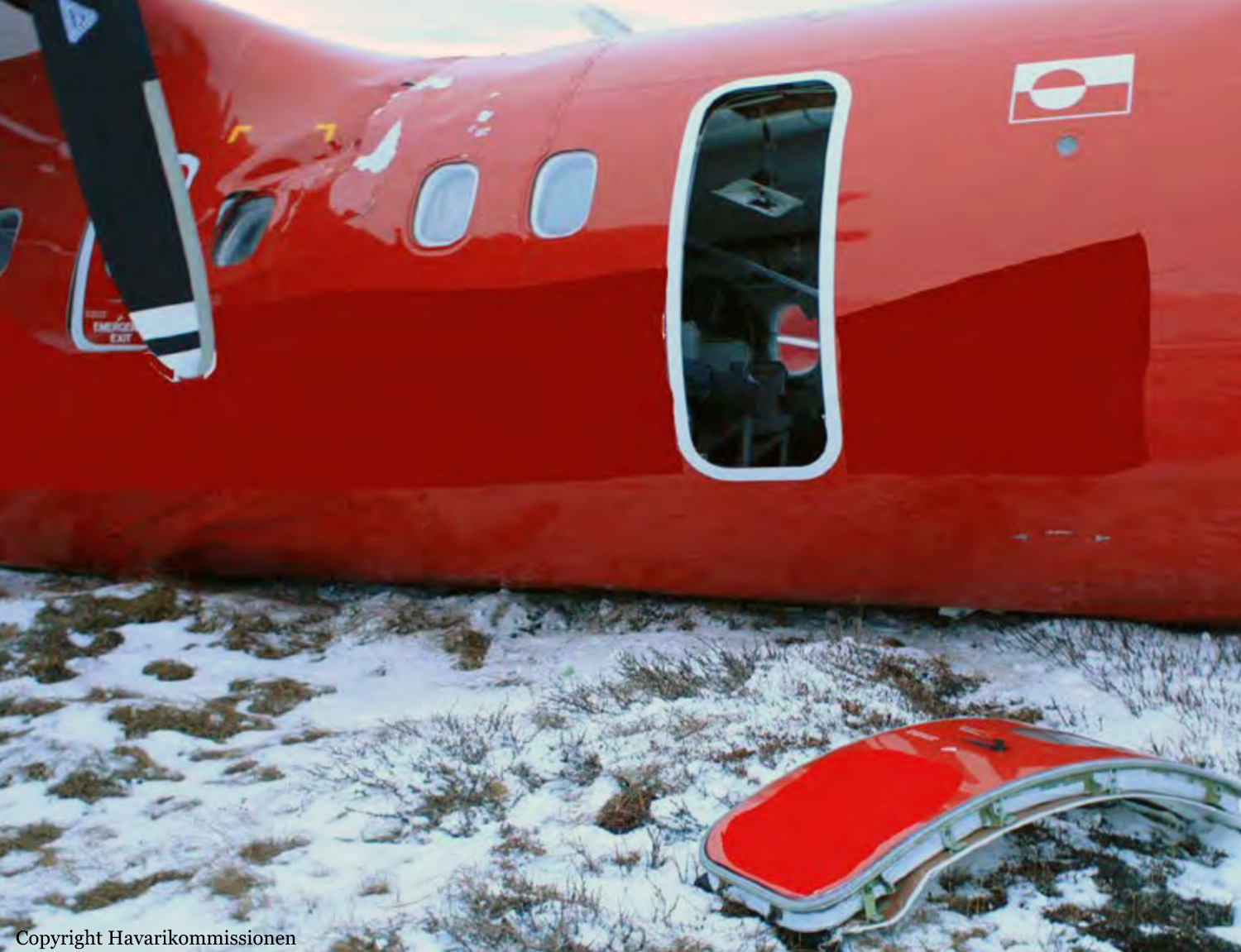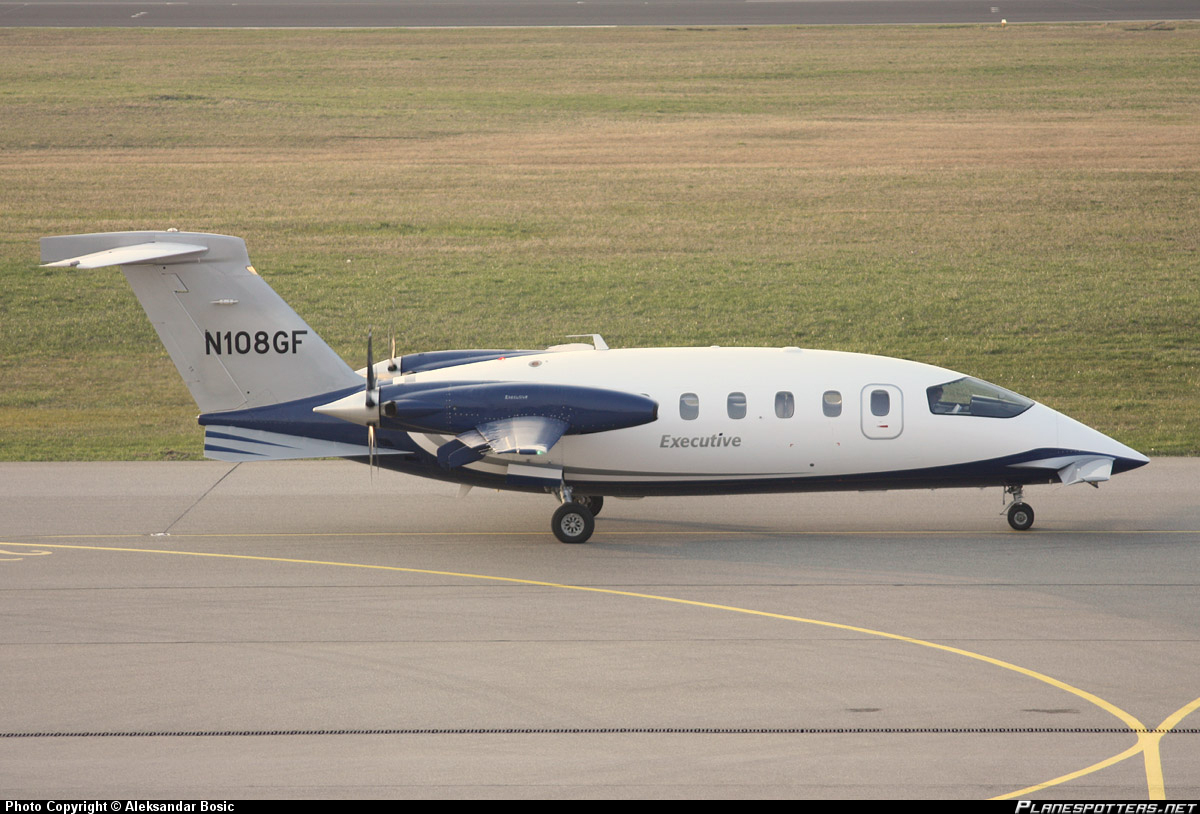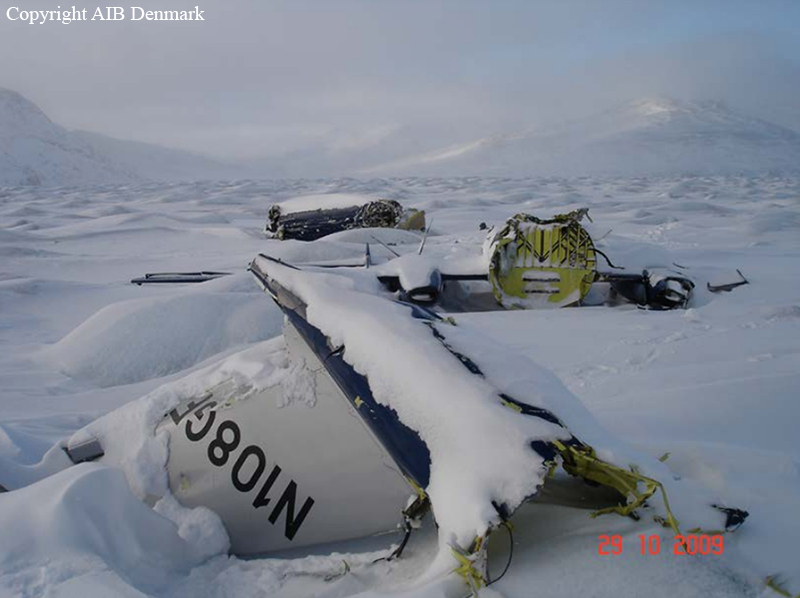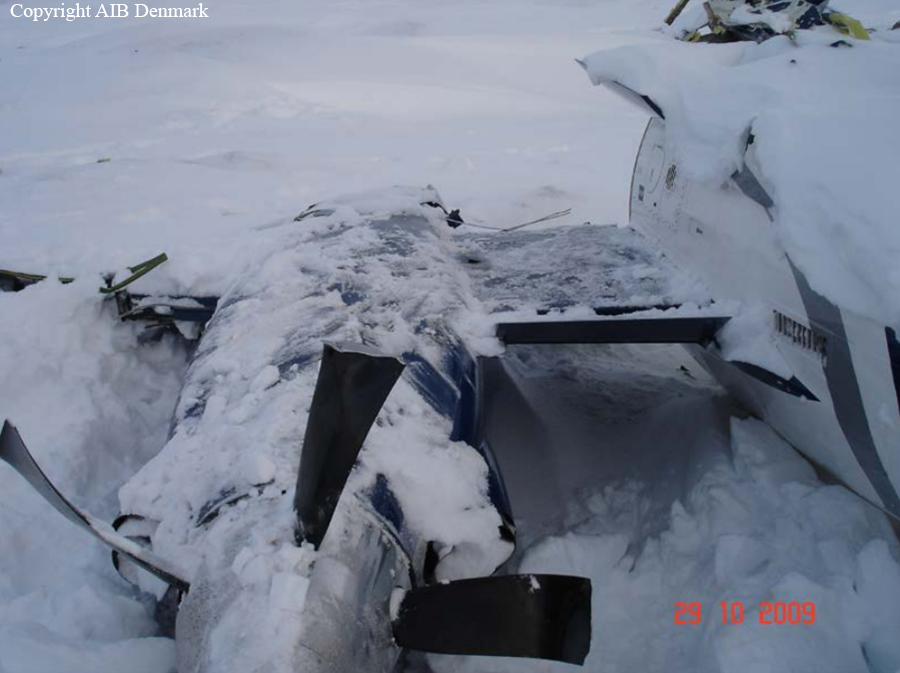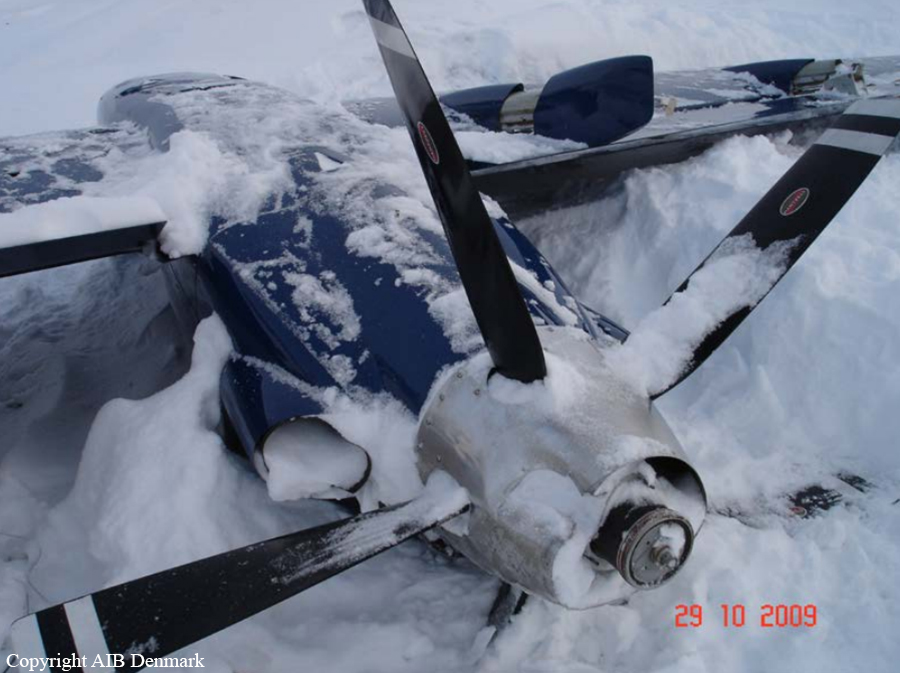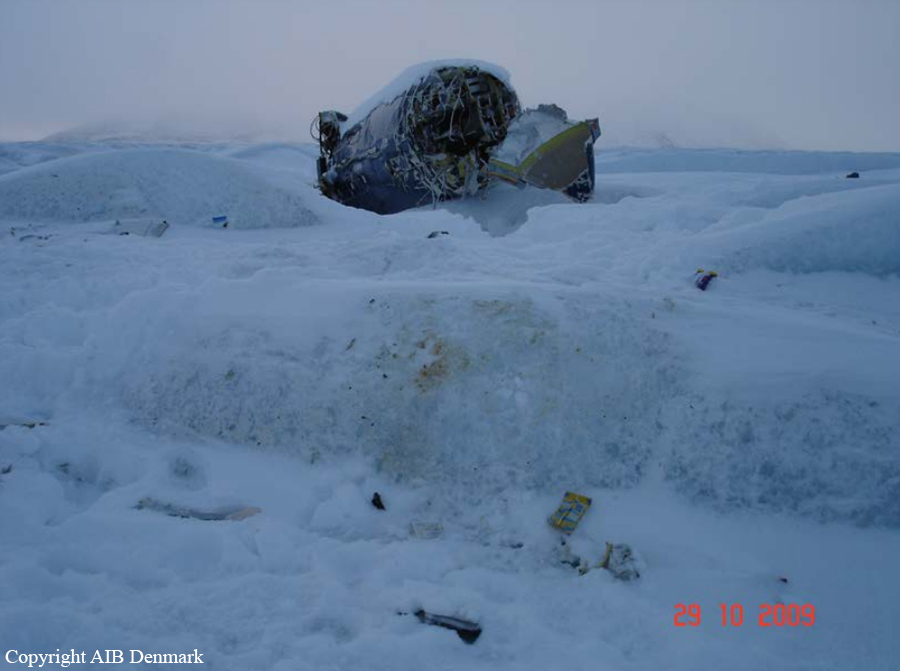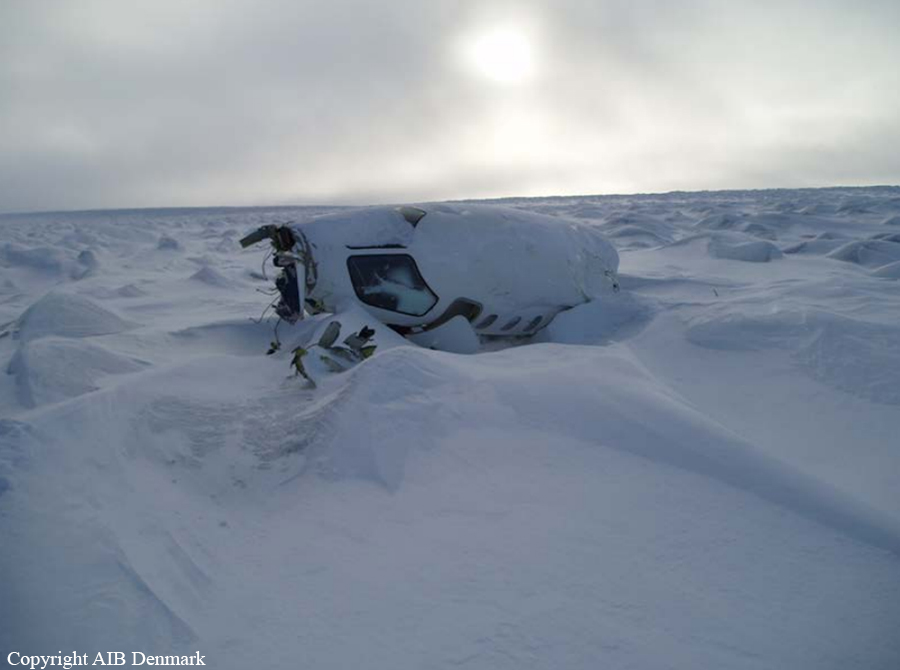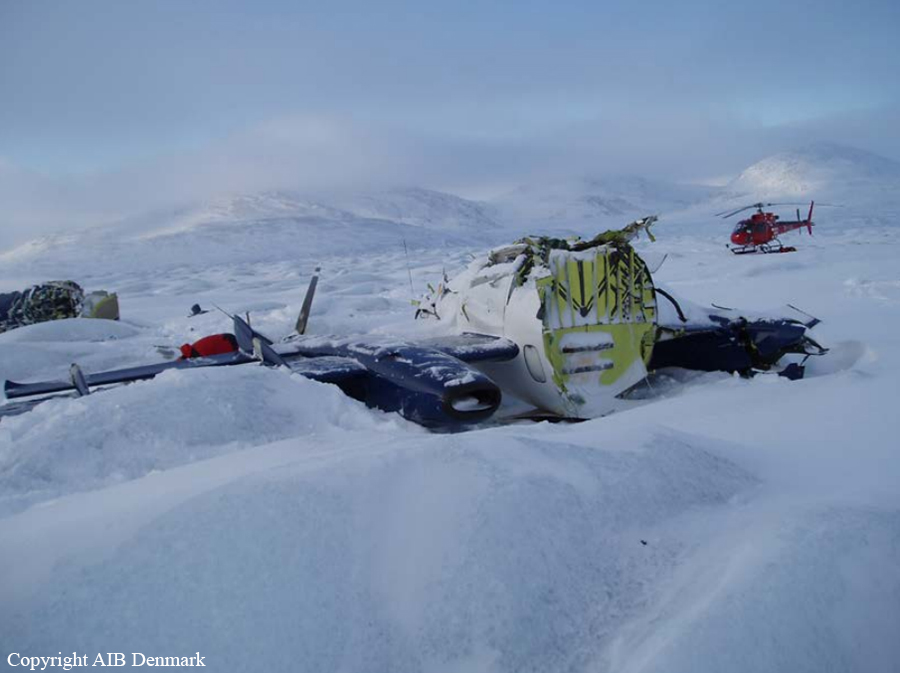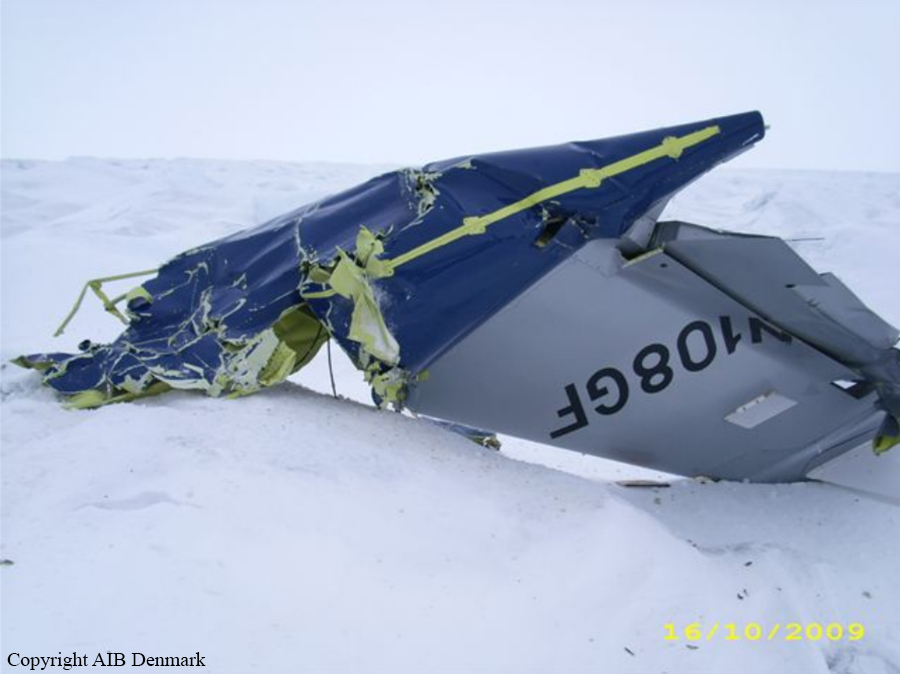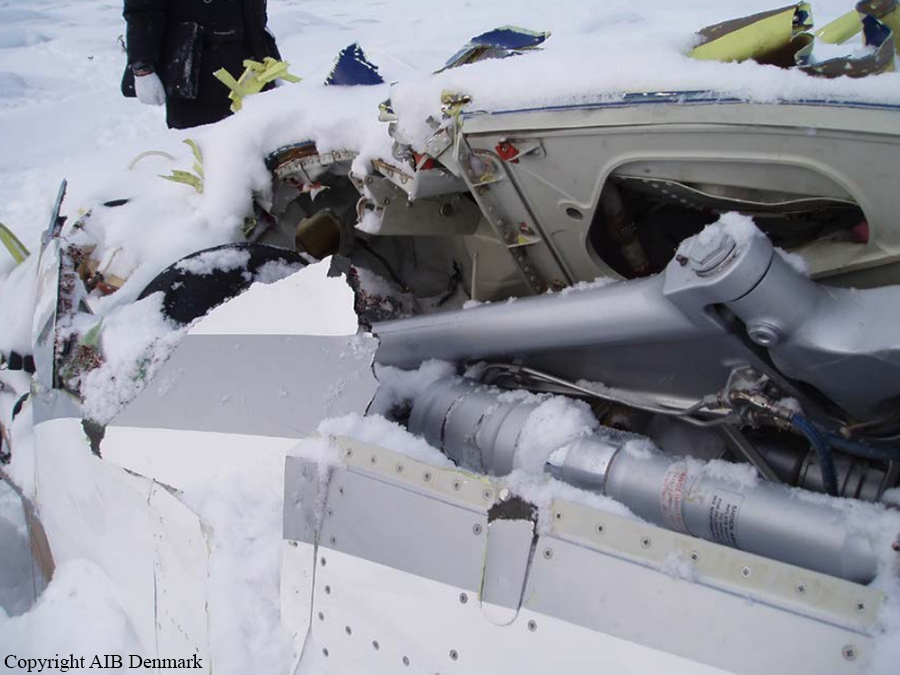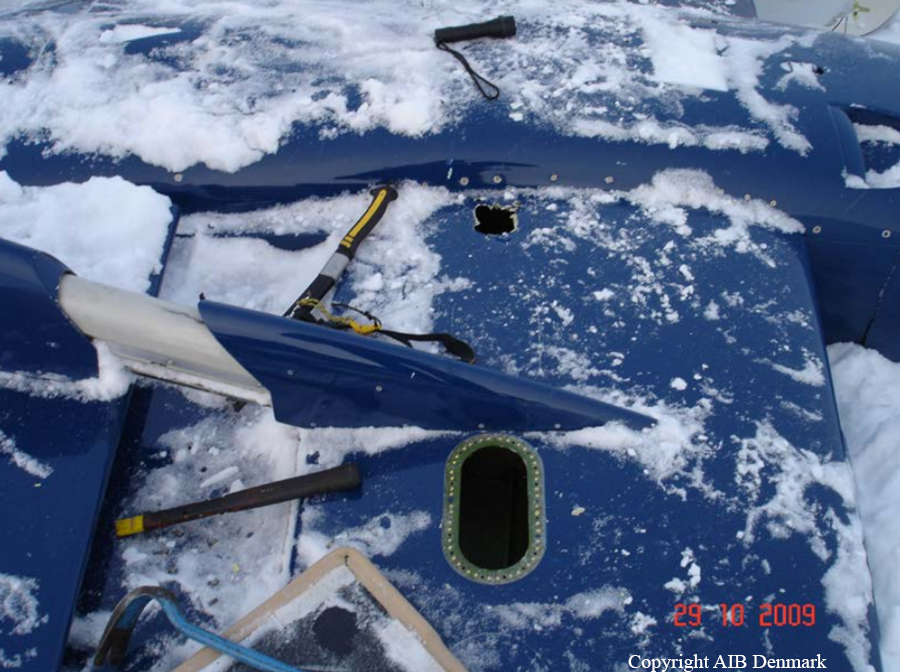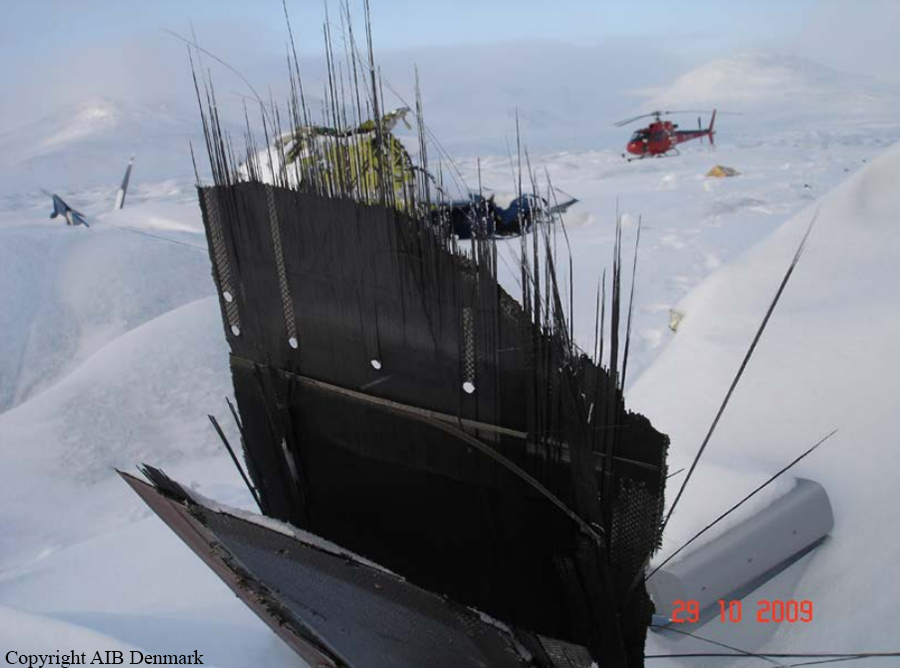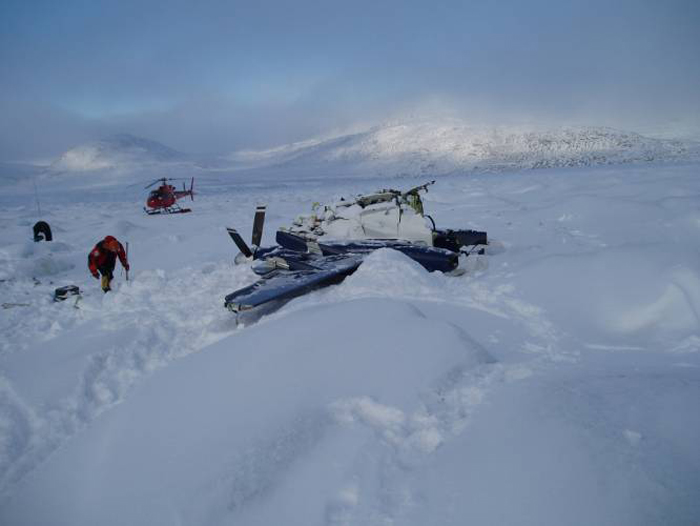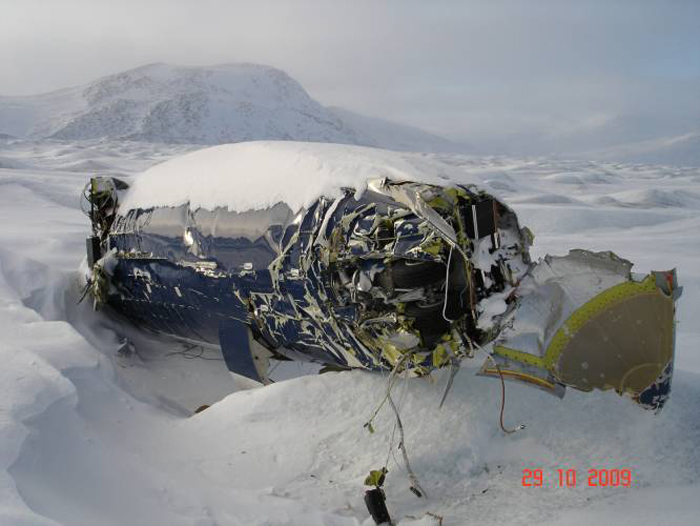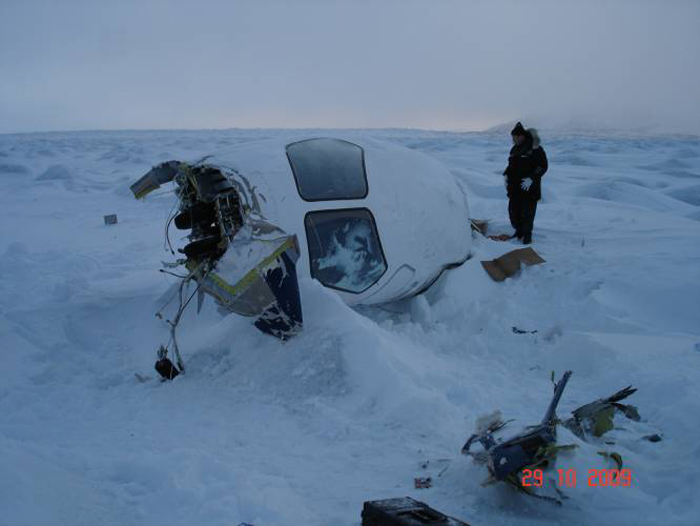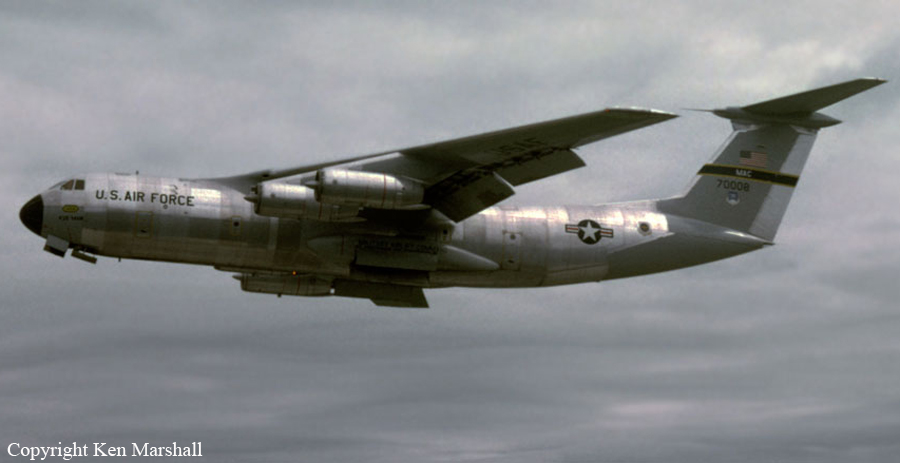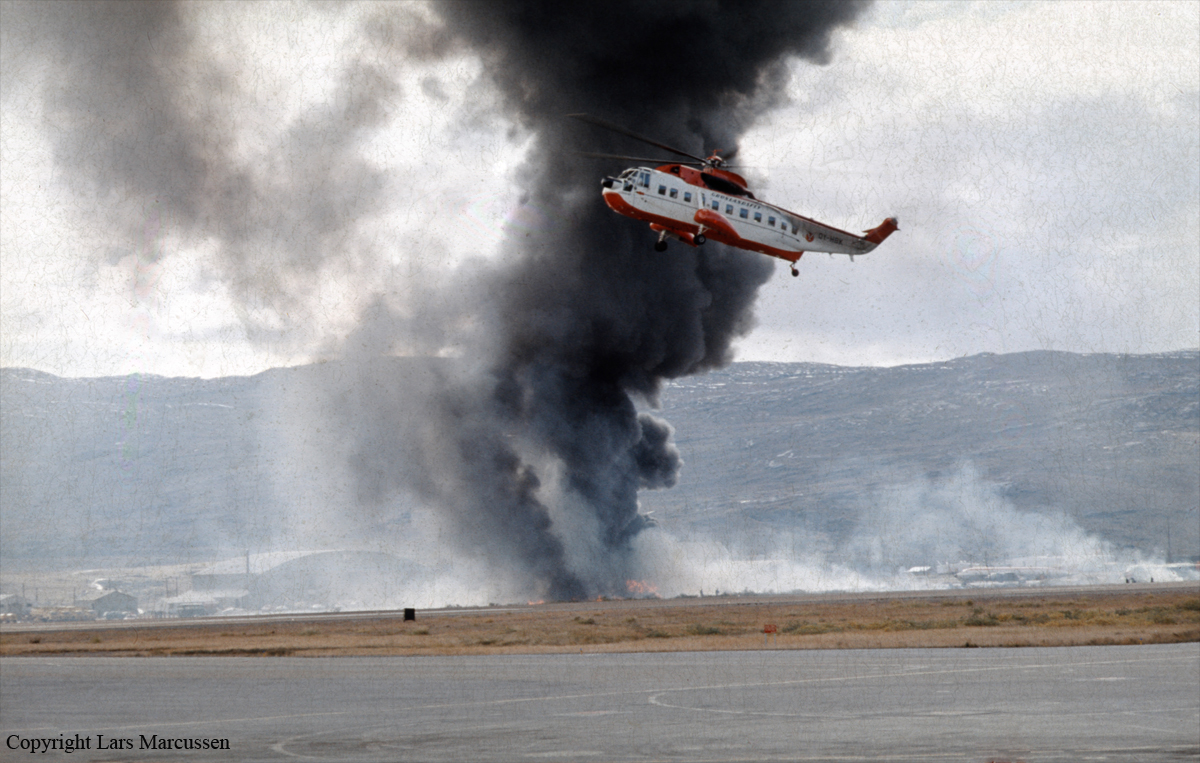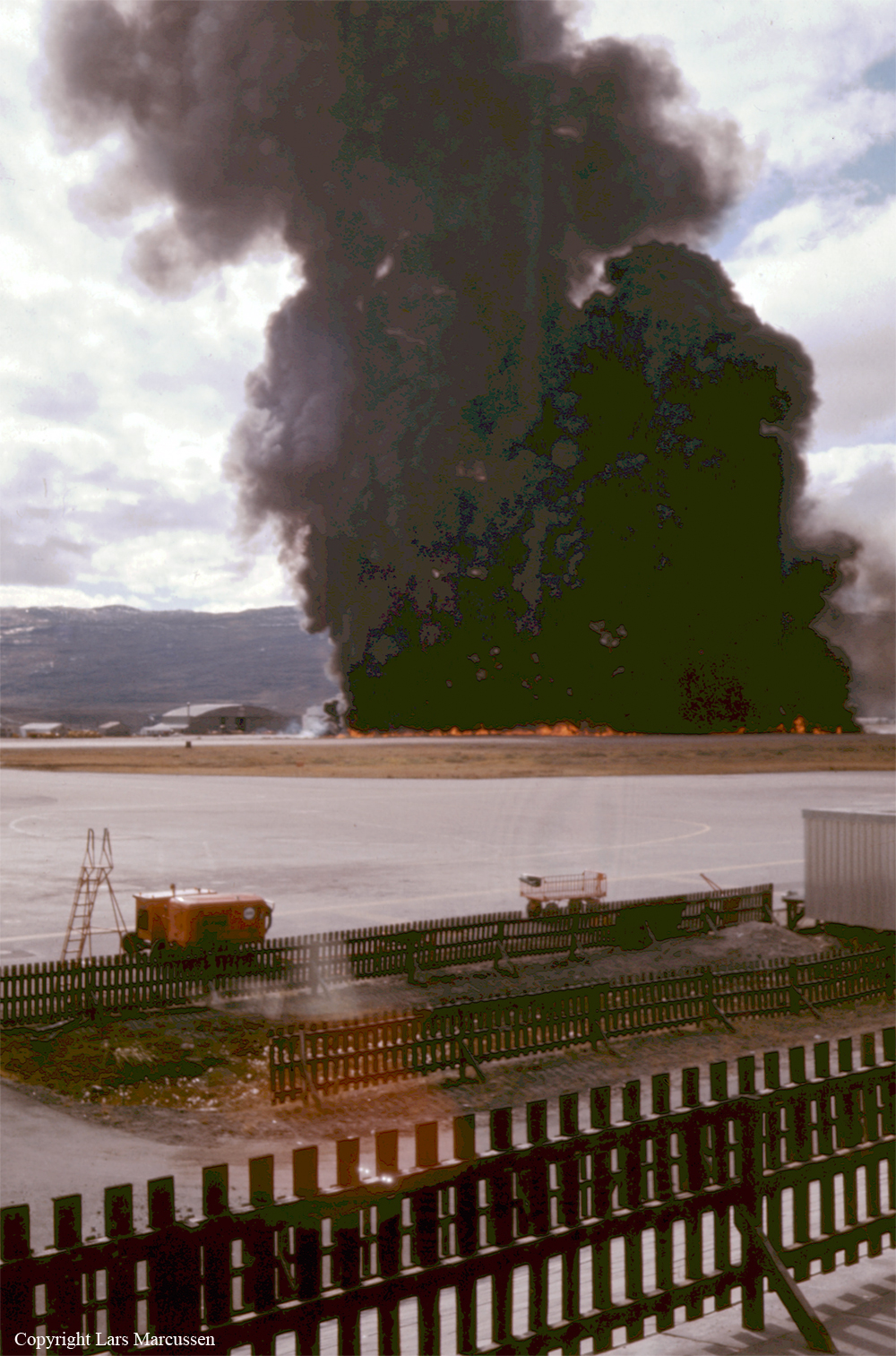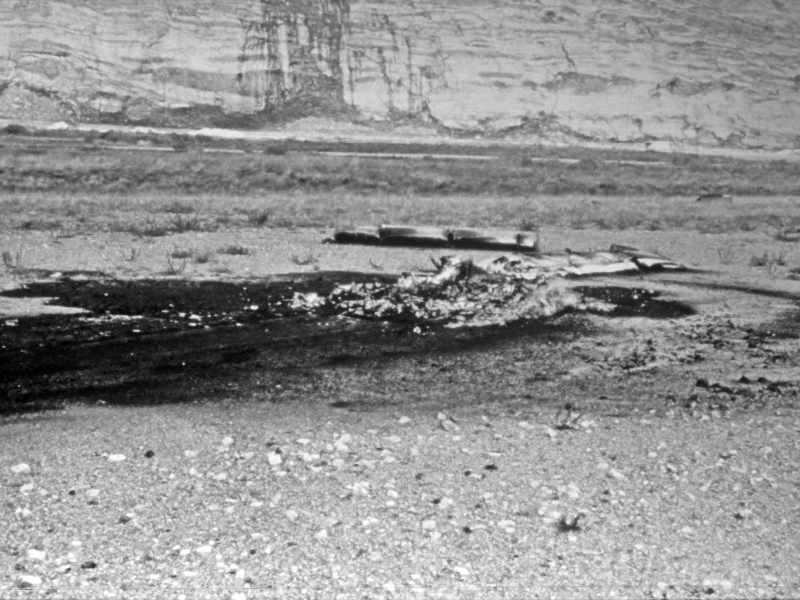Crash of a De Havilland DHC-8-202Q in Ilulissat
Date & Time:
Jan 29, 2014 at 0842 LT
Registration:
OY-GRI
Survivors:
Yes
Schedule:
Kangerlussuaq – Ilulissat
MSN:
477
YOM:
1997
Flight number:
GRL3205
Crew on board:
3
Crew fatalities:
Pax on board:
12
Pax fatalities:
Other fatalities:
Total fatalities:
0
Captain / Total hours on type:
739.00
Copilot / Total hours on type:
1022
Aircraft flight hours:
29947
Aircraft flight cycles:
41968
Circumstances:
Upon landing on runway 07 at Ilulissat (BGJN) in gusting crosswind conditions above the aircraft and the operator limited maximum crosswind components, the left main landing gear collapsed. The aircraft skidded off the left side of the runway in a nose right position and into the safety zone. The aircraft continued an increasingly sideways skid in a nose right position, skidded down a steep snow-covered slope and impacted a rocky area approximately 10 meters below the runway elevation. One passenger and one crew member suffered minor injuries. The aircraft was destroyed. The accident occurred in dark night and under visual meteorological conditions (VMC).
Probable cause:
The following factors were identified:
- A non-optimum CRM on final approach to runway 07 led to flight crew target fixation and a mental blocking of an appropriate decision on going around.
- A non-stabilized approach in crosswind conditions above the aircraft and the operator’s crosswind limitations combined with the actual crosswind landing technique and the power levers retarded below flight idle in flight resulted in an accelerated rate of descent leading to a hard landing, with side load on the left main landing gear at touchdown.
- The left main landing gear structural fuse pin sheared as a result of lateral and vertical overload stress.
- Cycling the power levers between ground and flight range prevented an appropriate deceleration of the aircraft and prolonged the landing roll.
- The combination of applying full left rudder and no decisive use of reverse thrust on the side with the unaffected main landing gear made it impossible for the flight crew to maintain directional control.
- A non-optimum CRM on final approach to runway 07 led to flight crew target fixation and a mental blocking of an appropriate decision on going around.
- A non-stabilized approach in crosswind conditions above the aircraft and the operator’s crosswind limitations combined with the actual crosswind landing technique and the power levers retarded below flight idle in flight resulted in an accelerated rate of descent leading to a hard landing, with side load on the left main landing gear at touchdown.
- The left main landing gear structural fuse pin sheared as a result of lateral and vertical overload stress.
- Cycling the power levers between ground and flight range prevented an appropriate deceleration of the aircraft and prolonged the landing roll.
- The combination of applying full left rudder and no decisive use of reverse thrust on the side with the unaffected main landing gear made it impossible for the flight crew to maintain directional control.
Final Report:
